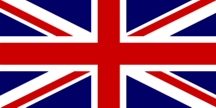![[Bermuda]](../images/v/vxt-d2130.gif)
![[St. Maarten]](../images/v/vxt-d2129.gif)
![[American Samoa]](../images/v/vxt-d2131.gif)
Flag of Bermuda (fotw); Flag of St Maarten (fotw); Flag of
American Samoa (fotw).
2) See Union flag’.


Union Flag 1601 – 1801, UK (CS); href="gb.html">Union Flag, UK (fotw)
![[bandera de ceremonia]](../images/v/vxt-d1337.gif)
National Flag of Argentina in Flag of Ceremony/Indoor Format (Vexilla Mundi)
Please note that this term is a direct translation of the Spanish "Bandera de Ceremonia" and should not be confused with a ceremonial ensign/or flag as listed separately herein.
![[flags of command]](../images/v/vxt-d147.gif)
From left: Fleet Admiral, USN (fotw); Admiral. USN (fotw); Vice
Admiral, USN (fotw); Rear Admiral, USN (fotw); Rear Admiral (lower half) USN (fotw)
Notes
1) Although these terms are sometimes
considered interchangeable, the Editors have drawn a general distinction between
the command flags used by senior naval officers, the rank flags employed by officers
from the other armed services, the distinguishing flags of civilians and with
personal flags.
2) A further distinction has been drawn between
the flag of command which replaces the masthead pennant, and command pennants
which do not.
![[flags of convenience]](../images/v/vxt-d2041.gif)
![[flags of convenience]](../images/v/vxt-d2879.gif)
National Flags/Civil Ensigns of Panama and
Liberia (often flown as a flag of convenience)
Please note that although in widespread use prior to this date, the flag of defiance did not appear in English naval Instructions until 1647 (and was dropped in 1799) – see ‘red flag 2)’ and its following note.
![[flags of distress]](../images/v/vxt-d149.gif)
From left: 1) Signal Flag Victor;
2) - 3) November–Charlie;
4) US Signal
Notes
a) While some may still acknowledge
an upside-down ensign as a signal of distress, it is no longer recognized under
international rules; and that the waft, also previously used, is now entirely
obsolete (see also
‘International Code of Signal Flags’,
‘signal flag’ and
‘waft’).
b) According to the US Coast
Guard regulations the orange flag should be either square with vertically arranged
symbols as illustrated above, or rectangular with the square and disc horizontal, and that
a very similar signal is recommended in the ICS for identification from the air (see also
‘International Code of Signals’).
![[Austro-Hungary flag of honor]](../images/v/vxt-d504.gif)
Austro-Hungary 1850 – 1918 (Željko Heimer)
Please note that the term honour flag has been used for two other designs issued by different authorities under differing circumstances, and it is therefore suggested that this form of the term should be applied only to those flags – see ‘honour flag 1)’ and ‘honour flag 2)’.
![[flag of pretence]](../images/v/vxt-d1482.gif)
![[flag of pretence]](../images/v/vxt-d1483.gif)
![[flag of pretence]](../images/v/vxt-d1484.gif)
National Flag of Comoros (fotw); Naval Ensign of
Bolivia (fotw); 51 Star Flag of The United States (fotw)
Please note that the 51 star flag of the United states displays one more star than there are states in the Union, whilst the national flag of Comoros or the naval ensign of Bolivia for example (and illustrated above), show one more star than they have provinces under their current control. An anticipatory flag, on the other hand, such as a 39 star flag of the United States, displays a symbol of granted statehood but in advance of its official appearance on the flag.
![[flag of St. George]](../images/v/vxt-d001.gif)
Command Flag of a Full Admiral, UK (fotw)
![[air force flag]](../images/v/vxt-d2538.gif)
![[air force flag]](../images/v/vxt-d2539.gif)
![[air force flag]](../images/v/vxt-d2540.gif)
Flag of the Air Force, Peru (fotw); Flag of the
Air Force, Portugal (fotw); Ensign of the
Air Force, Australia (fotw)
![[flag of the army]](../images/v/vxt-d2541.gif)
![[flag of the army]](../images/v/vxt-d2542.gif)
![[flag of the army]](../images/v/vxt-d2740.gif)
Flag of the
Army, UK (fotw); Flag of the
Army, China (fotw);
Flag of the Army, South Africa (fotw)
![[Marine Corps flag]](../images/v/vxt-d202.gif)
![[Marine Corps flag]](../images/v/vxt-d204.gif)
![[Marine Corps flag]](../images/v/vxt-d2741.gif)
Flag of the Marine Corps, US (fotw); Flag of the
Marine Corps, Brazil (fotw); Flag of the
Marine Corps, Taiwan (fotw)
![[flag of navy]](../images/v/vxt-d2543.gif)
![[flag of navy]](../images/v/vxt-d2742.gif)
![[flag of navy]](../images/v/vxt-d2544.gif)
Flag of the Navy, US (fotw);
Flag of the Navy, Colombia (fotw);
Flag of the Navy, Peru (fotw)
![[flag of the state of Florida]](../images/v/vxt-d002.gif)
Flag of the State of Florida, US (fotw)
![[Flag of tolerance]](../images/v/vxt-d1485.gif)
Flag Representing the Balance of Life (fotw)
![[Flag officer flag]](../images/v/vxt-d1507a.gif)
![[Flag officer flag]](../images/v/vxt-d1507b.gif)
![[Flag officer flag]](../images/v/vxt-d1507c.gif)
![[Flag officer flag]](../images/v/vxt-d1507d.gif)
![[Flag officer flag]](../images/v/vxt-d1507e.gif)
![[Flag officer flag]](../images/v/vxt-d1507f.gif)
Admiral in Command and not in Command; Vice Admiral in Command and not in Command, Rear Admiral in Command and not in Command, Spain (fotw)
Please note with regard to 2) that in Royal Navy usage all officers of flag rank were formerly considered to be flag officers, but that the term is now restricted to those of that rank who are entitled to fly a flag of command aboard ship.
![[flag officer's broad pennant]](../images/v/vxt-d1230.gif)
Yacht Club
Vice-Commodores Broad Pennant, Finland (fotw)

![[flags of defiance]](../images/v/vxt-d990.gif)
![[Flag of truce]](../images/v/vxt-d1170.gif)
![[Flag of war]](../images/v/vxt-d347a.gif)